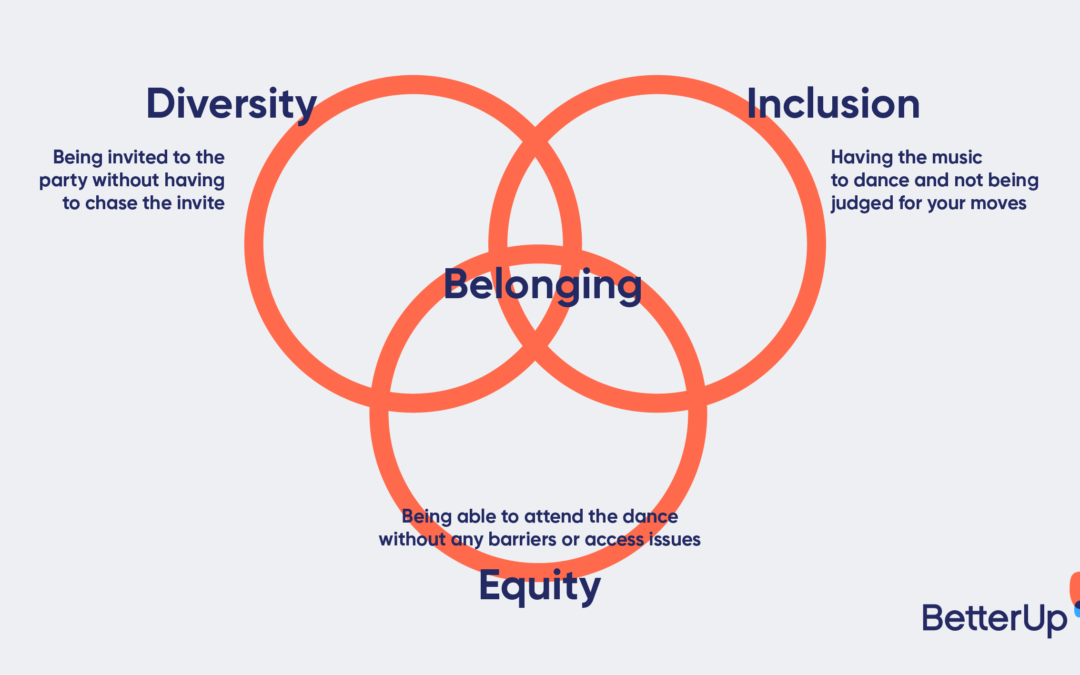By Simone Logan
For me, Diversity, Equity, and Inclusion (DEI) are like the proverbial three-legged stool. A DEI two-legged stool may stand for a moment but all three are needed to hold up DEI initiatives. If one leg is missing, the stool will topple over. A March 2021 Forbes article, 15 Key Benefits of DEI To Communicate With Team Members, discusses the benefits of DEI. The article states that companies are more likely to hit financial goals; generate a wealth of ideas and input not previously thought of; foster faster innovation, fueling product development and new products that deliver a competitive edge; provide a sense of belonging impacting employee retention; and offer psychological safety where employees feel they can be their authentic selves at work.
Recently a fourth component has been added for consideration, and that is Belonging. According to a SHRM article on Belonging, ‘DE&I is about an organization’s approach and principles, while Belonging tells if it’s working.’ The fourth leg of Belonging makes for a sturdy foundation!
Years ago, I had doubts that broad DEI initiatives would last. There was opposition internally from some employees as well as outside of organizations perhaps more in the past than today. Today I have a completely different view. I’ve seen DEI work successfully during time in my last industry where it was not just a check the box item. Programs, policies, and strategies were executed with commitment and intentionality from the top down. There also are data driven facts proving that DEI can positively affect the bottom line.
Having the advantage of working in diverse work environments, I’ve discovered that just because a workplace is diverse, doesn’t mean equity and inclusion are practiced or valued. DEI opened my eyes to my own biases and made me examine how and if I fit into organizations. Equity and inclusion awareness provided the tools to figure out perception versus reality. In those organizations where I had mentors (formal and informal), I felt included as they helped me to navigate ambiguous situations. Mentorship also helped foster a sense of belonging and helped me feel that it was ok to bring my authentic self to the workplace. I have also seen pay inequities corrected when DEI was a core business value.
Recently, there was a story in the news that uncovered my own myopia regarding DEI. Disabled individuals are suing Washington, DC for violating Americans with Disabilities Act with the construction of new protected bike lanes. I lived in DC for years with its numerous bike lanes in the most traffic heavy areas. Sad to say, not once did I ever consider how bike lanes could be an impediment for disabled individuals who need to safely access transportation. What an eye opener! What does this have to do with DEI and belonging? Possibly everything. Awareness happens when people are seen and valued. They are more likely to receive consideration for equal treatment and inclusion and this adds to a sense of belonging. That is what counts!
If you have a DE&I program, is it working? Do all employees have a sense of belonging? These questions and more can also be applied to clients and customers.
Here are a few articles for your consideration:
CEO_Blueprint.pdf (michiganfoundations.org)
Opinion | Does diversity training work? We don’t know — and here is why. – The Washington Post
Don’t train your employees on DE&I. Build their capabilities. | McKinsey & Company
Simone Logan is the co-chair of the Culpeper Chamber of Commerce Diversity, Equity and Inclusion Council.
.



